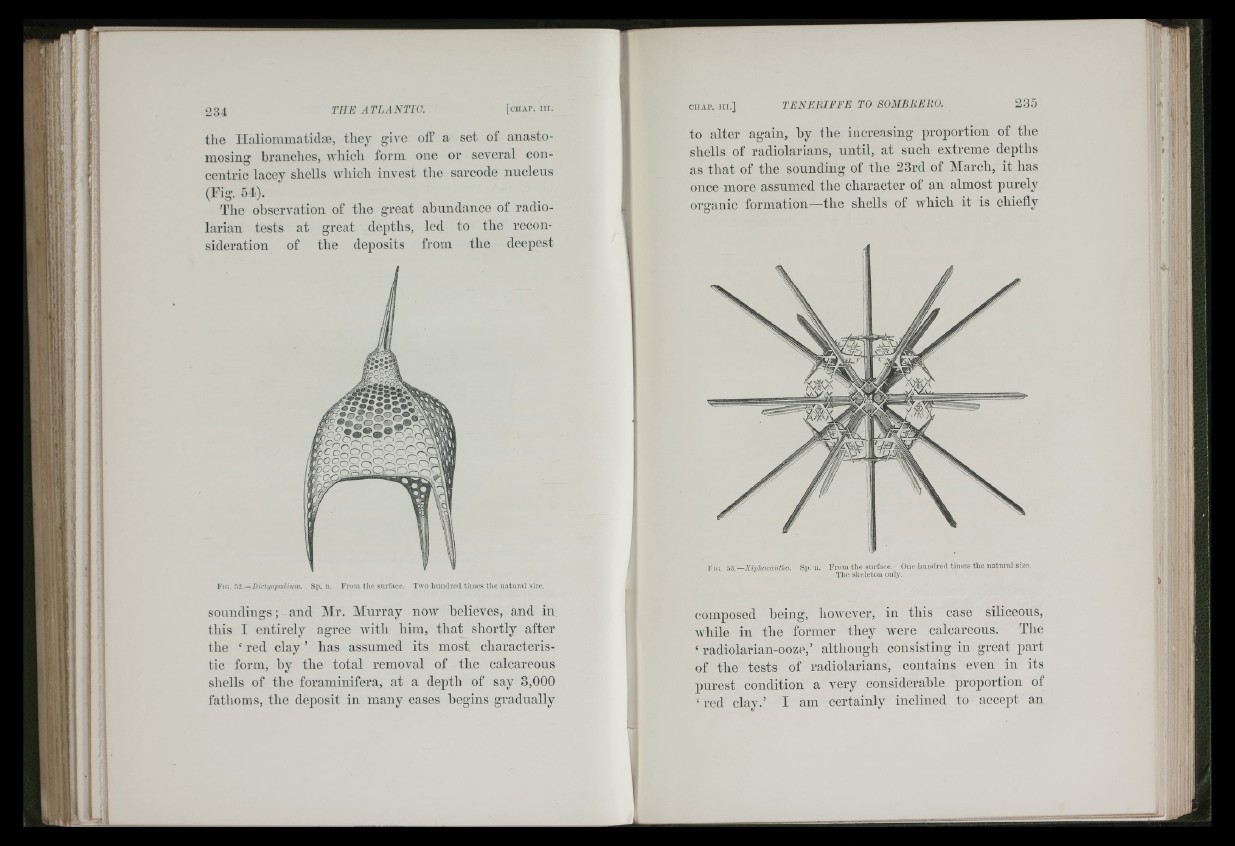
>!
234
the llaliommaiidse, they give off a set of anastomosing
branches, AAdiich form one or several concentric
lacey shells AAdiich invest the sarcode nucleus
(Eig. 54).
The observation of the great ahundance of radio-
larian tests at great depths, led to the reconsideration
of the deposits from the deepest
F i o . b 2 .— D i c t y o p o d i u m . S p . n . F r o m t h e s u r f a c e . T a v o h u n d r e d t im e s t l i e n a t u r a l s i z e .
soundings; and Mr. Murray uoav believes, and in
this I entirely agree AAdth him, that shortly after
the ‘ red clay ’ has assumed its most, eharacteris-
tic form, hy the total removal of the calcareous
shells of the foraminifera, at a depth of say 3,000
fathoms, the deposit in many cases begins gradually
to alter again, hy the increasing proportion of the
shells of radiolariaus, until, at such extreme depths
as that of the sounding of the 23rd of March, it has
once more assumed the character of an almost purely
orfTanic formation—-the shells of Avhich it is chiefly
-I At...
.] i ; !.
’ : /llljl.l ■
-Hliii '
V\c . ■H.— X i2yhacantha. Sp. n. From the surfaee. One hundred times the n a tu ra l size.
T h e s k e l e t o n o n ly .
composed being, hoAvever, in this case siliceous,
Avhile in tbe former they Avere calcareous. The
‘ radiolarian-ooze,’ although consisting in great part
of the tests of radiolariaus, contains even in its
purest condition a very considerable proportion of
‘ red clay.’ I am certainly inclined to accept an